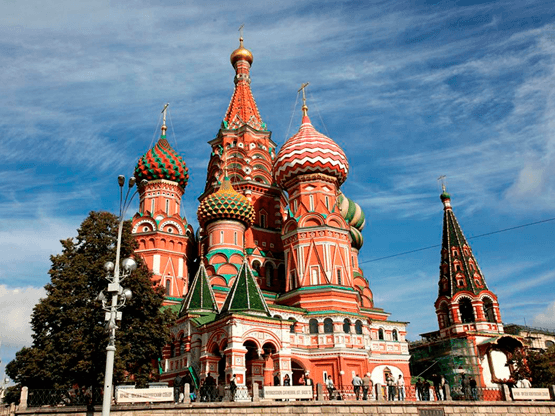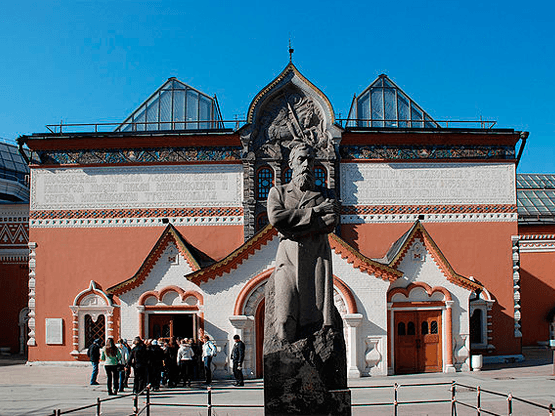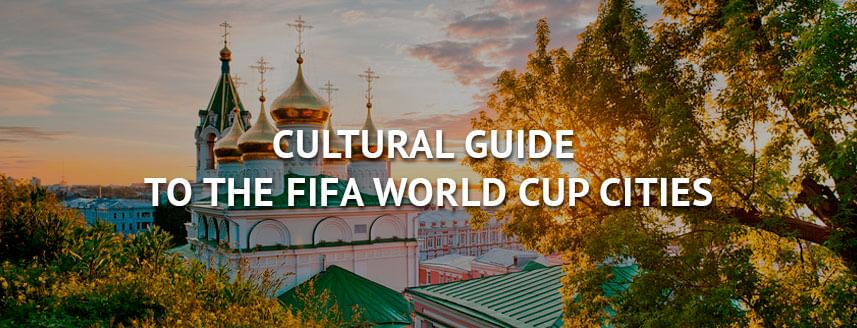Top 5 Moscow Attractions
A treasury museum, a museum preserve in a former imperial residence and an ancient cathedral. Culture.ru web portal’s cultural guide will take you through Moscow’s landmarks.

Photo courtesy of Pavel Losevsky / Photobank Lori
The Armoury Chamber

The Armoury Chamber, which is a part of the Great Kremlin Palace complex, is located in the building constructed by the architect Konstantin Ton in 1851. The main part of the museum’s collection consists of precious objects that had been stored in the tsar’s treasury and the Patriarch’s Sacristy for centuries. Those objects were either ones made in the Kremlin’s workshops or gifts from foreign Embassies.
In the Armoury Chamber, one can see ancient state regalia, tsar’s ceremonial attire and coronation attire, vestments of the Russian Orthodox Church hierarchs. The museum is home to jewels created by Russian artisans, Western European silver artworks, precious arms and ceremonial decorative horse trappings.
The museum features over 4,000 objects of arts and crafts from Russia, European and Eastern countries from the 4th to the early 20th century.
St. Basil the Blessed Cathedral

The Intercession Cathedral, or St. Basil the Blessed Cathedral, one of the most famous churches in Russia, was consecrated in 1561. It was erected at the location of a wooden Trinity Church under a decree by Ivan IV in memory of the conquest of Kazan in 1552. In the late 16th century, the cathedral was rebuilt: a tent-shaped bell tower was erected in the east, the shape of domes was changed, and the walls were painted with various colours.
Today, it is not certain who built the cathedral and the researchers have several theories. According to one of them, the cathedral was erected by two architects, Barma and Postnik. Their names were found in a 17th century manuscript. Another version says the cathedral was built by an unknown foreign architect.
In 1739, during a fire, the cathedral’s interior burnt down completely. It was restored and repainted in white, and the Lord’s tables from 15 churches and cathedrals of the Red Square were moved under its vault. In the late 18th century, the cathedral’s iconostasis was created and it can be found in the cathedral even nowadays. In 1812, the cathedral was yet again heavily damaged in a fire. Five years later, it was restored and its original polychromatic colouring of the walls was recreated.
In 1923, the cathedral became a museum. Today, the Intercession cathedral is a branch of the State Historical Museum and a UNESCO Cultural Heritage Site.
The State Tretyakov Gallery

The State Tretyakov Gallery is one of the largest museums in the world. Muscovite merchant and art patron Pavel Tretyakov started collecting paintings in 1856. In 1892, he donated his collection to the city of Moscow. Today, the Tretyakov Gallery is home to 170,000 art works ranging from the 11th to the 20th century.
The Gallery’s main building is situated in the Lavrushinsky Lane. It stores a grand collection of Russian art from different eras until the early 20th century: paintings by Vasily Perov, Ivan Kramskoi, Viktor Vasnetsov, Aleksey Savrasov and other master painters. The neighbouring Engineering building hosts temporary exhibitions, lectures and film screenings. The building on Krymsky Val Street offers a collection of Soviet and Russian art of the 20th and 21st centuries.
The Gorky Central Park

The Gorky Central Park of Culture and Leisure is situated on Krymsky Val Street in the centre of Moscow. It was opened in 1928. The park’s design was developed by Ivan Zholtovsky, Konstantin Melnikov and Aleksandr Vlasov.
Exhibition pavilions, a decorative basin and several amusement rides were built in the park. The architects created a whole children’s village with a tent circus and a children’s railway, the first one in the world.
Perennial flowers and topiary bushes were planted in the park. White cedars, black locusts, blue spruces and variegated ash trees were brought there.
In 2011, the recreational park was reconstructed. Old amusement rides and kiosks were replaced with contemporary art installations. The Golitsynsky and Pioneer Ponds were cleaned, fish was brought there and a rare species of black-neck swans now live in the ponds.
The Tsaritsyno Museum and Reserve

Tsaritsyno was first mentioned in a 1589 cadastre. This land was owned by the Streshnevs, the Golitsyn princes, the Kantemirs. In 1775, the estate was purchased by the Empress Catherine II.
A palace complex was built in the new royal estate and it became the imperial residence near Moscow. First, Vasily Bazhenov was the head architect, and later, Matvey Kazakov took up the relay. After the Empress Catherine II’s death, the development of the palace stopped. The park became a place for country picnics and promenades, and some of the buildings were rebuilt into summerhouses. After the revolution, communal apartments appeared in Tsaritsyno that existed there until 1970s. The architectural complex reconstruction started in the late 20th century.
Today, it is the largest 18th century pseudo-Gothic style palace in Europe. There is a museum open in Tsaritsyno. Its collection consists of archaeological findings and Slavic folk arts. Guided tours of greenhouses are held there too.
